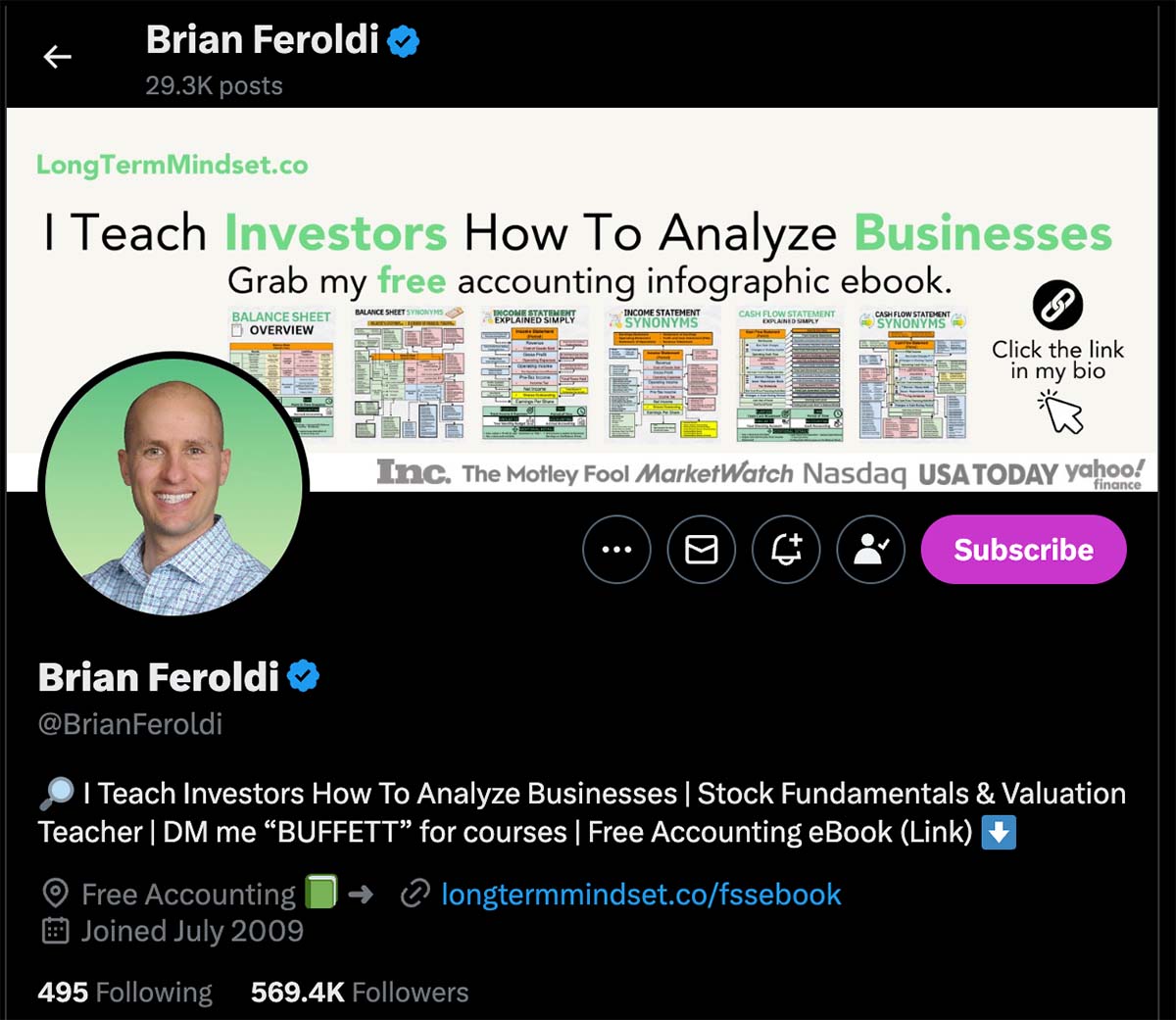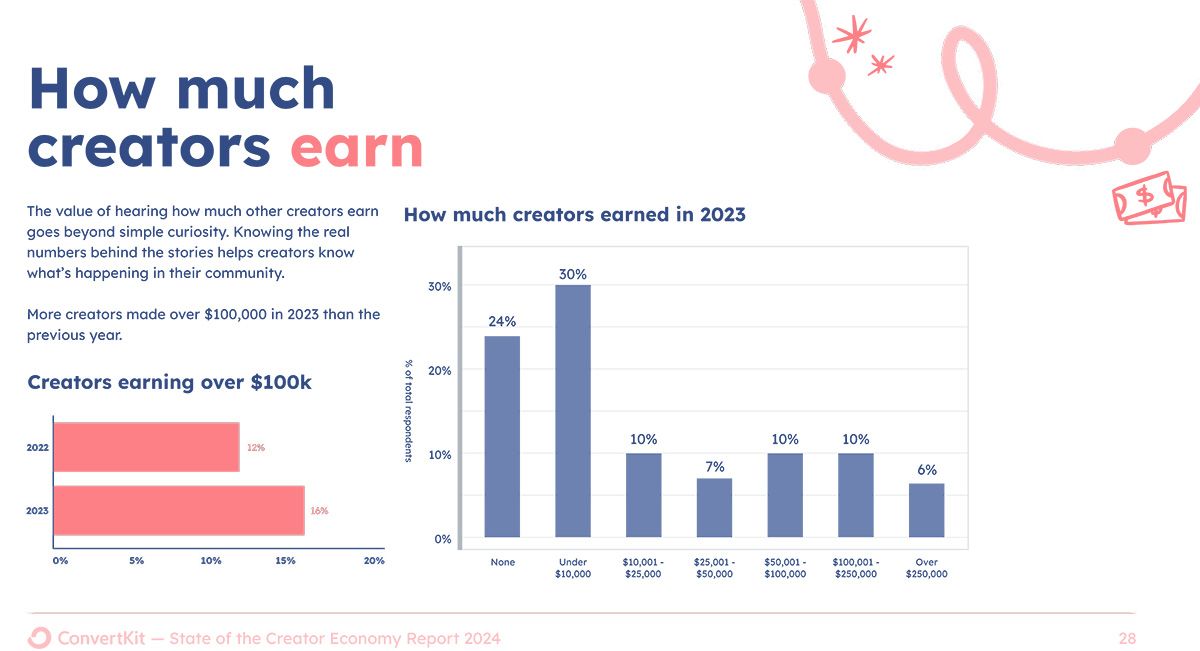Influence Peddling and the Entrepreneurial Content Creator
Social media revenue sharing does not generate much money for most content creators. Rather, to earn a living online, start a business.

It seems like everyone wants to be a content creator or social media celebrity, but for most folks, making any money is unlikely, and earning a living online is rare.
Set aside celebrity creators like Jimmy Donaldson (MrBeast), Khaby Lame, and Charli D'Amelio, and we find that most content creators earn pocket change on social media platforms.
TikTok is an Example
A would-be influence peddler on TikTok must have 10,000 followers and 100,000 views in the past 30 days to qualify for revenue sharing or the platform's Creator Fund. This requirement means that nearly 70% of TikTok users earn nothing.
Those TikTok users who do qualify for revenue sharing or the Creator Fund earn $20 to $40 for every million views. So, if a TikTok video had as many views as the opening ceremony of the 2024 Olympics (approximately 29 million), the creator would earn as much as $1,160.
In April 2024, TikTok had 1.58 billion active users, according to a Backlinko article. Meanwhile, an Oberlo article estimated that TikTok's 2024 advertising revenue is around $17.2 billion and rising. That is an impressive amount of advertising income until you decide to become an egalitarian and try to share it with those aforementioned 1.58 billion active users. When you do divide it evenly —and assume TikTok takes nothing— you end up with $10.88 per user for the year.
While it is possible to earn a living as a social media influencer on TikTok or a similar platform, it is, perhaps, not the most certain way.
Build a Business
Certainty comes when a social media influencer or creator builds a business with income beyond platform revenue sharing.
While it is rare for creators to earn a living with dance videos and memes alone, there is a discernable and traceable path to success for the entrepreneurial creator. Build a business, not only a following.
Building a business doesn't mean every content creator must also run a consultancy or agency. The suggestion is to take ownership of one's audience, develop clear lines of business, and work to earn a living online.
This business may enjoy revenue sharing from one or more social media platforms, but it is not dependent on the social media dole.
Own the Audience
Social media influencers frequently say things like, "I have 100,000 followers." This statement can be true in a sense, but social media accounts and their access to an audience of followers can be cut off.
Instagram, TikTok, Facebook, and even the free-speech-oriented X regularly warn, suspend, or ban accounts. Politicians are regular targets, but even well-known celebrities like Madonna and Rihanna have received social media warnings. If Madonna does not really own access to her social media following, no one does.
Thus, owning the audience is the first step toward building a real content creation business.
Let's try an example, Brian Feroldi is one of three Brians —along with Brian Stoffel and Brian Withers— behind the Long-term Mindset newsletter. Feroldi is a master at transferring followers from his social media accounts to an email list.

At the time of writing, Feroldi had more than 569,000 X followers, 156,000 followers on LinkedIn, and 81,000 subscribers on YouTube. Each of these social media platforms featured Feroldi's current lead magnet and offered folks a reason to share an email address.
Once the three Brians have an email address, they have an audience that cannot be taken from them. No policy change on X or new LinkedIn requirement can wholesale take away their business.
That is the first step toward earning a living with a content creator. Transform followers into subscribers or members and own the audience.
Develop Clear Lines of Business
Content like blog posts, an email newsletter, or short-form videos on TikTok are essentially ways to collect attention.
It has become cliché to say that folks are inundated with information or to describe the combination of social media, streaming services, and messages of various kinds as an endless information cacophony. Nonetheless, this is true, and as political scientist Herbert A. Simon said in 1971, "A wealth of information creates a poverty of attention."
Thus, the content creator who has some measure of attention also has the opportunity to exchange that attention for dollars and cents. That is what is meant by developing clear lines of business. Develop methods to convert audience attention into money consistently.
One common way to trade attention for money is with newsletter sponsorships. Another option is to sell a course. In fact, there are at least eight ways to earn money with a blog or a newsletter that don't even require much creativity, including:
- Selling products,
- Offering online courses or workshops,
- Advertising and sponsorships,
- Memberships and subscriptions,
- Affiliate marketing,
- Blog flipping,
- Donations,
- Coaching.
Earning a Living
The intersection of audience attention and a line of business —or product— is where content creators can earn a living online.

A survey of 1,000 folks who describe themselves as "creators" found that in 2023, 26% of respondents made a living online, and 16% earned more than $100,000 a year.
This 2024 State of the Creator Economy report also found just what has been described here. Revenue comes from offering a product or service to an owned audience.